Welcome back to Chess in Small Doses, a Substack about adult improvement in chess. Today I’m writing about the new challenge I’m facing in chess. Chess improvement seems like an endless road, one I will never reach the end of. However, thankfully I’ve been here before as a resident doctor. This helped me find a way forward. I need to transition and learn what is and what isn’t important in chess positions. Let’s get into it.
Better
As I’ve written in the last two posts, I’m on a heater as of late. As of this writing today I’m nearing my all-time high in Lichess Classical and have kept my Lichess Rapid rating above 2000. I’m still playing in the month long OTB tournament and the rating hasn’t adjusted yet. Rating of course is a lagging indicator which just reflects the efficacy of the work you’ve done. Plus externally focused motivation around ELO is self defeating. But it is fun right now. I’m up over 150 point in Lichess Classical over the last 3 months since making changes. As my mom might say, that doesn’t suck.
However over the last few weeks, despite winning games, I have felt increasingly unsure with the positions I’m getting. As my opponents got stronger, the tactics were much harder to pull off. Suddenly I’ve been having to find good moves in positions like this one. White to move:
There was no killer tactic here, so what does White do? White has control of the d file and maybe could try to get a passed pawn on the Queenside. However, the doubled h-pawns proved useful as White can just launch them at Black’s kingside with abandon. Again, nothing killer but certainly useful.
Let’s look at another position from another game, now with Black to play.
Again, no killer tactic here. Here Black can play Kh8, Nb4, Nb6, a6, a5, and even Bb6. I spent time and looked at all of those. I saw the threat of Ba3 but assumed I could play c5 and Nb4 later should that happen. Ultimately I chose Nb4, thinking it put pressure on my opponent. It did, but it was also a mistake that could be exploited. I didn’t even consider the simplest plan of Qf7 here for Black. It was just invisible to me.
Now let’s look at one from an OTB game, Black to play.
I had been playing Black in the Caro Kann Breyer Variation and we got to this position. Black is cramped for space and White has some very active pieces. Defending this was hard, but I was able to marshal a lot of pieces around my king generally making things difficult for White. Still, the f8 rook and the g6 bishop are really restricted. I needed a way forward.
I thought Black would do well if the rooks were doubled on the d file, but also having the bishop on f8. Getting rid of the f5 knight would be nice too. But how to make all that happen? I sat and thought for a while and saw the very simple Ne8. The knight moves backwards, heading towards d6. Then Rfe8, Bf8, and Black might even be a little better due to control of the d file.
Here’s the same game but 10 moves and a rook trade later. I’m not sure who’s better, but Black will play Nbc5 next and have much greater activity than the previous position. At least Black has more space for the pieces I thought.
New Mountains to Climb
Some strange things seem to happen when you get better at tactics. One of them is that you win games against players who make simple mistakes (which until very recently used to be me). The second one is that tactics then somehow become less important to the outcome of the game. Better players are better because they can tactics and defend against them. The challenge then becomes something else.
In all of the positions I showed you there was no killer tactic, just strengths and weaknesses in pawn structure and in piece placement. In addition to seeing the tactical threats, suddenly now I need to be able to find good squares for my pieces while considering what my opponent was up to. Now I have to be able to read the board for both sides and find good moves.
This is a skill I had not yet deliberately practiced in training because it fell into the arena of strategy. About 1-2 years ago, I completely swore off strategy and middle game books. I was pretty sure I wasn't good enough for it to really matter. I had read Simple Chess but every other book after that just felt unhelpful. What was the point of reading about pawn structures if you were missing tactics or dropping pieces? Now however, things are different and I have a new challenge.
What Got You Here Will Not Get You There
It seems then that some growth is in order. The good news is I understand in general what it takes to go from amateur to expert. As a physician who has practiced for almost 20 years, I was the beginner and now am the expert. I can remember when I first started out, I was completely overwhelmed in the ER. I didn’t know what to pay attention to and what to ignore. There was so much information and so many things happening. I spent months where it felt like I was just swimming in quicksand. I didn’t start feeling confident until after a year as a resident. It was one of the hardest times in my life.
What made it so difficult is that I had to transition from being a student to being a doctor. As a student, the challenge was simply studying and retaining information. After primary school, high school, college, and medical school I was pretty good at that. Now suddenly I needed to have clinical judgment, communication skills, professionalism, and many other things that were new to me. The challenge had completely changed and I wasn’t prepared. I stumbled often and very publicly. In residency everyone is watching your performance and has an opinion they are eager to share. Through perseverance, acceptance, and hard work I was able to get through and find success.
I can look back at that time and realize there is a true statement about success. As soon as you succeed at something, you have moved (almost imperceptibly) onto a new challenge. What led to your success may actually become a hinderance if you’re not able to adapt to the new challenge. Essentially, what got you here will not get you there. A transition is needed, growth is required.
An Endless Road
Suddenly, the challenge in chess has changed and I need new skills. I see myself now standing on an endless road, having travelled so far and yet have so far to go. I began trying to learn how the pieces move. Then I learned about check mates, tactics, openings, and basic strategy. I have learned to visualize, to see mates in 3 or 4, and to set up tactics. And still, ahead is so much more. Middle games, endgames, strategy, evaluation, and on and on… It can seem overwhelming.
What I learned from residency and then years of practicing medicine is that we all make mistakes. There’s no way around it, mistakes are inevitable. Growth comes if we can learn from them. What we need to learn is what matters and what doesn’t. The fundamental problem in life isn’t a lack of information, it’s an overwhelming amount of it. As was once said, “a wealth of information leads to a poverty of attention.” It’s my opinion that what makes an expert in anything is that they know what information to ignore and what to pay attention to. An expert knows what is relevant and what isn’t. I understand now that I need to teach myself what is important in a chess position, and what isn’t. Yes that’s a lot to learn, but I can learn something from every game. It’s how I made it through residency, learning from one patient at a time.
Think of all the mistakes beginners make in chess. We buy books, we buy Chessable courses, watch opening videos, and try to learn as much as we can as if we were students. What we don’t realize enough is that the challenge has changed. We need to transition from being students into being players. Chess is not a learning contest, it is a game of time based decision making. But that’s both life and chess. Yes they are both finite things, but learning and growth is an infinite game.
Each game we play, we learn something. If we can accept our mistakes, persevere through the difficult time, and do our best to learn then we can grow. One thing I have learned after 5 years is that tactics matter most. Everything else is a distant second and just a distraction. Now that my games are looking different, I can begin to train strategy and how to make plans for a position. Tactics will always come first, but beyond them are more mountains. As Aiden Rainer says, “Here’s to the journey.”
Thanks for reading. I would love to hear your thoughts. I’ll be back next time with a post about the benefit of putting constraints on our training. See you then.





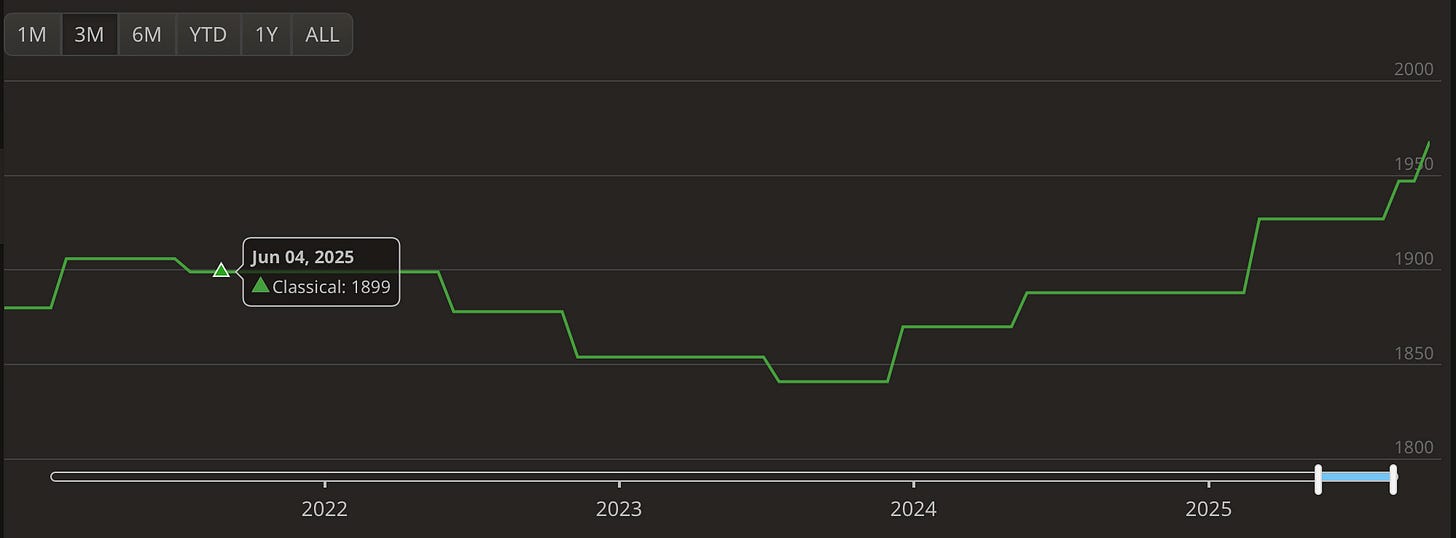
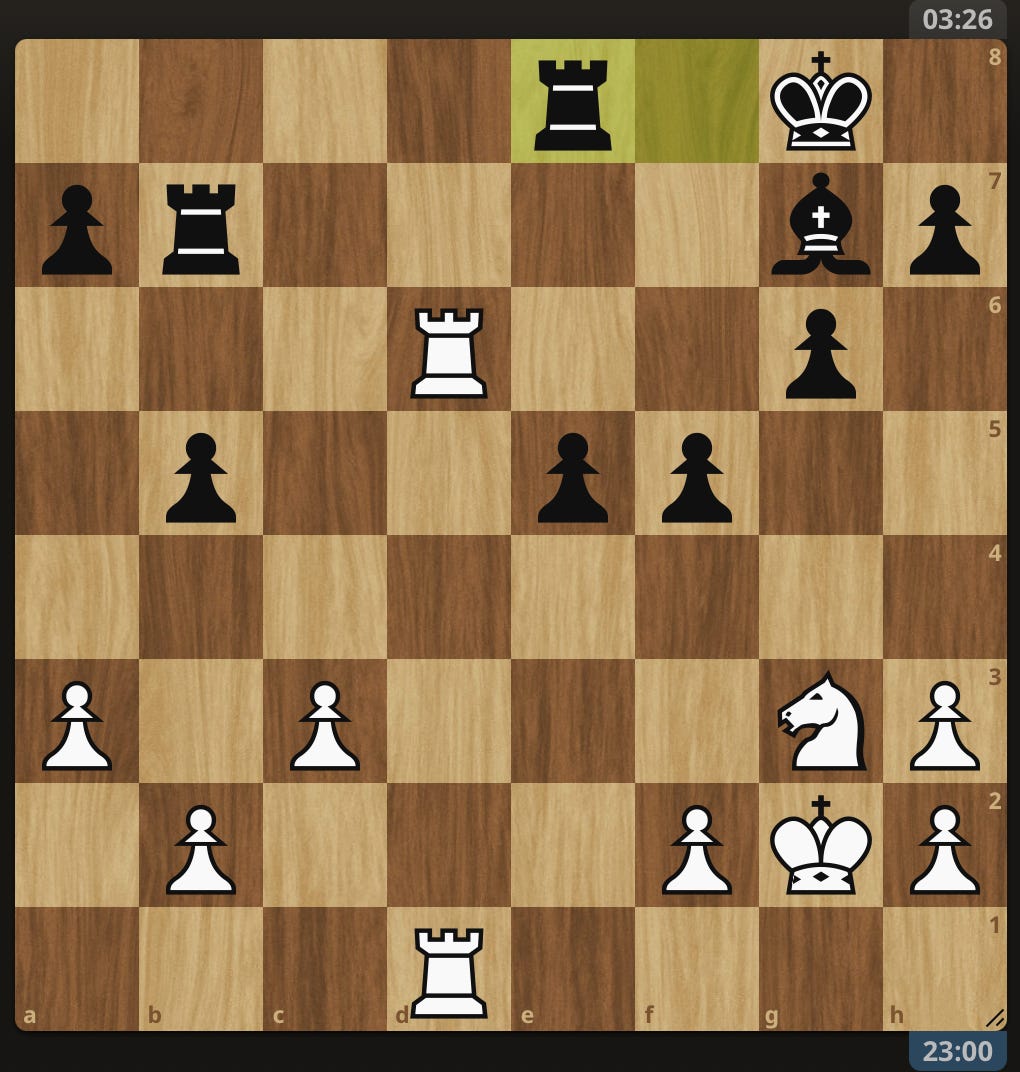
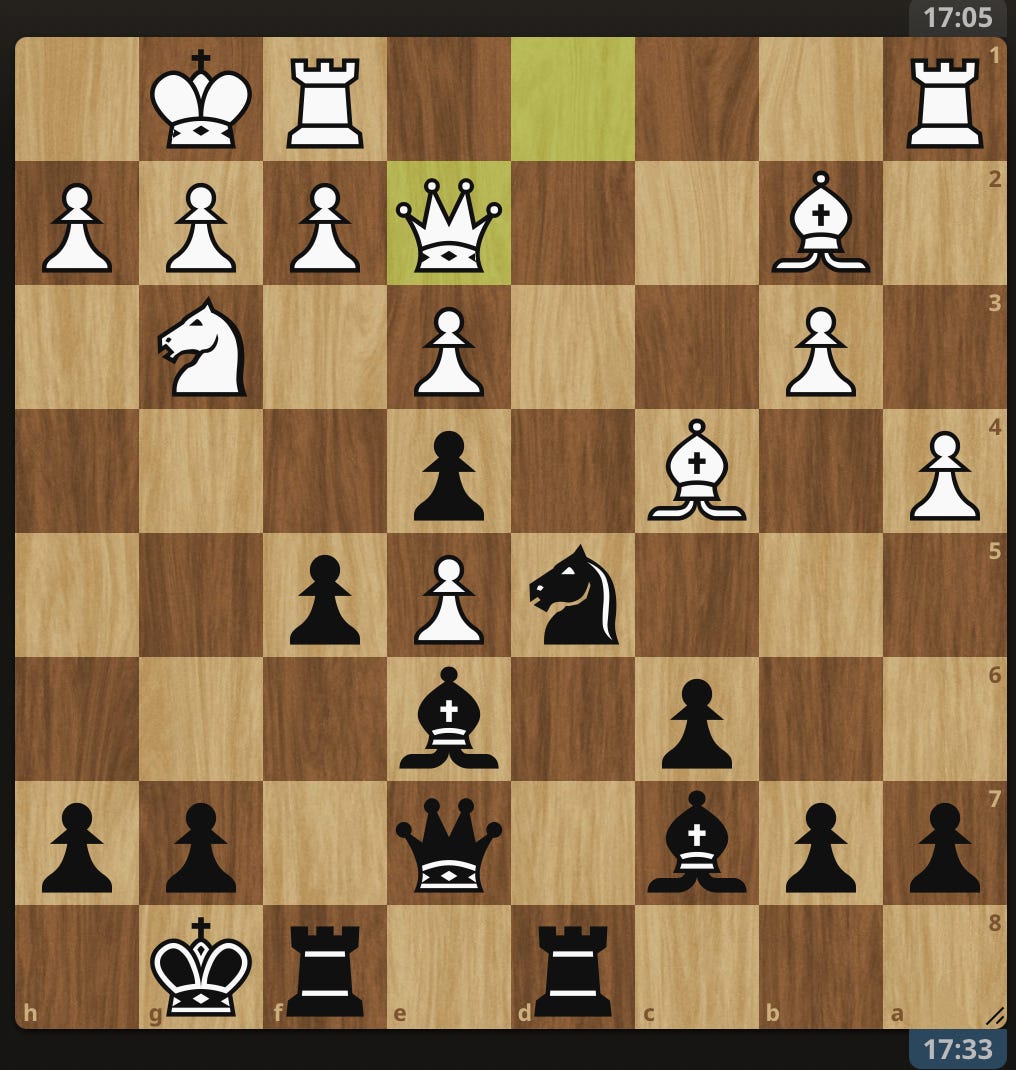

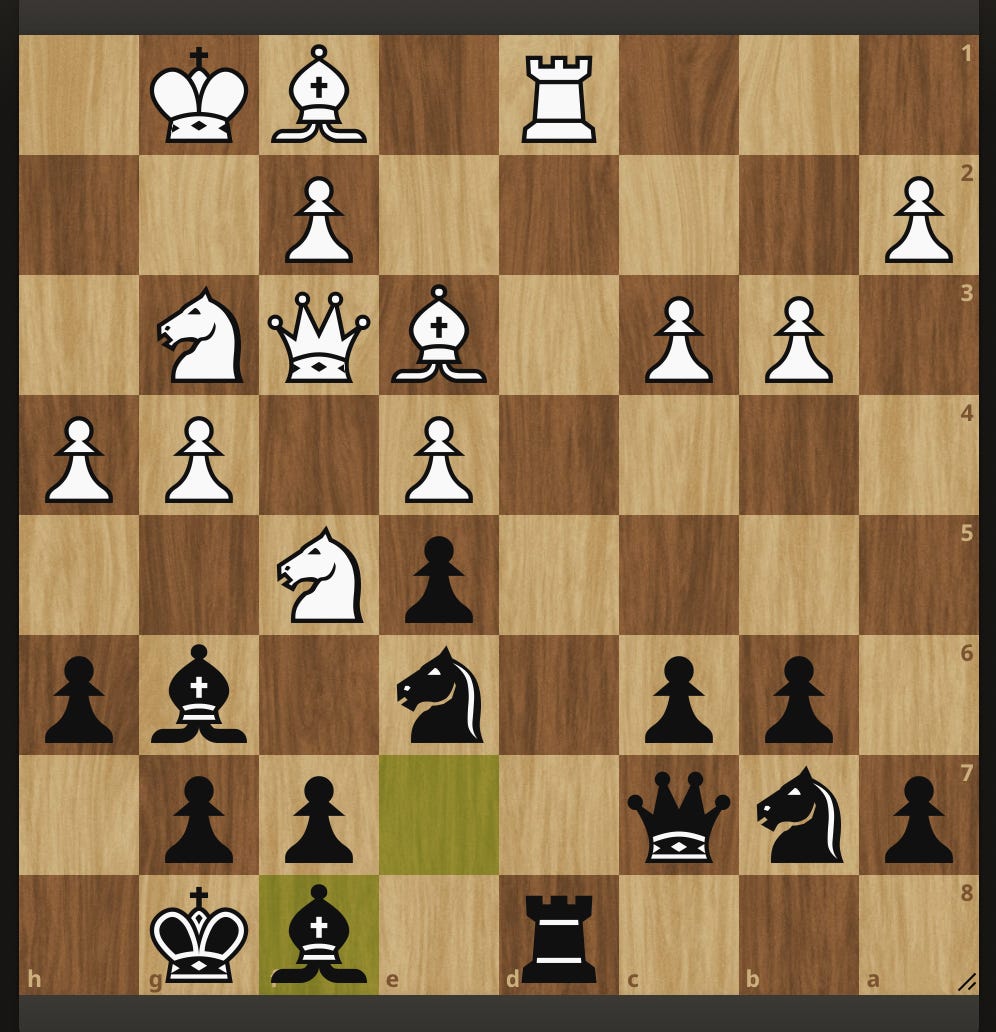
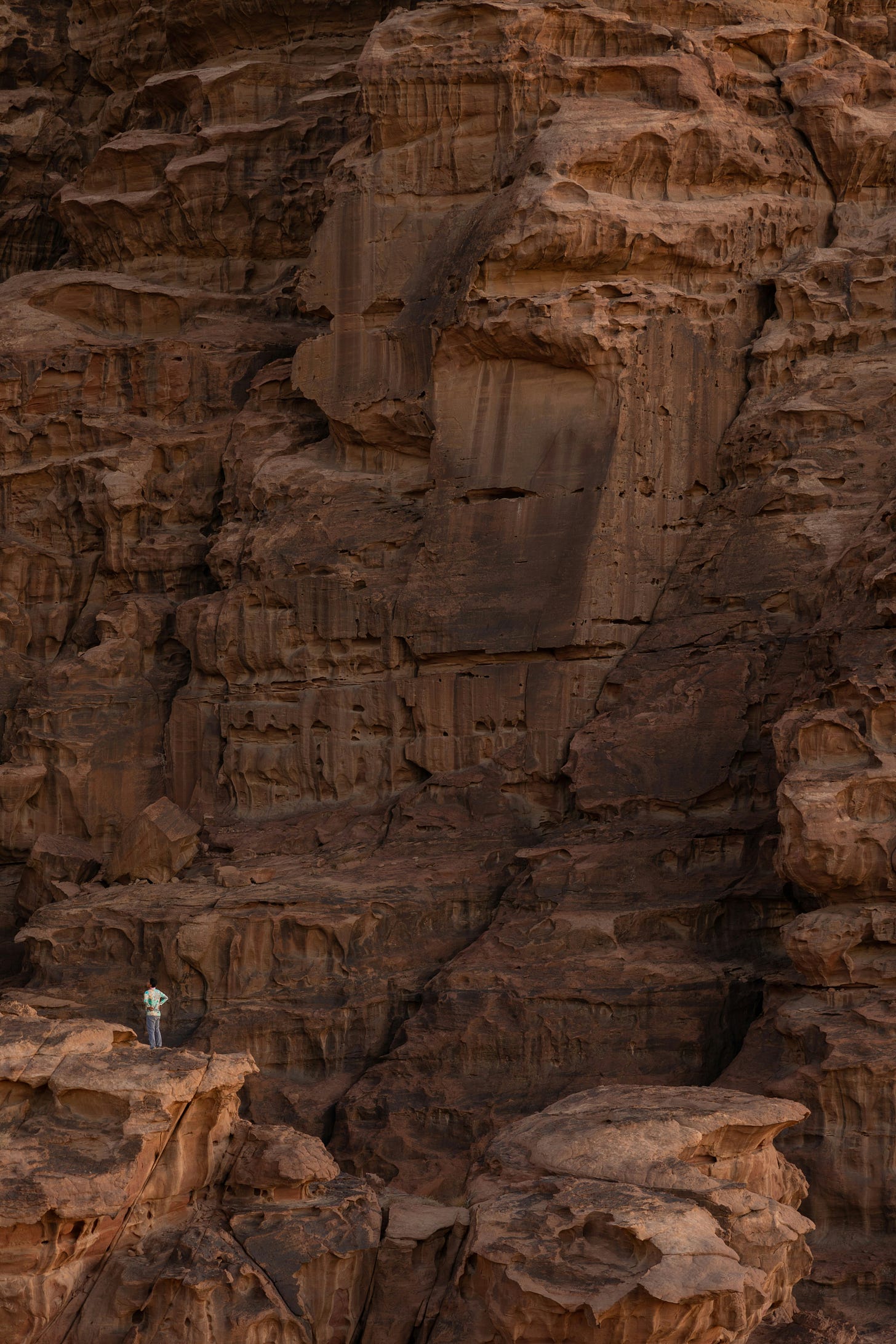

Thank you for a wonderful article. Endless road, that's the wonder of chess you never stop learning and there is always more than a lifetime. If you let it become a negative then that will diminish your enjoyment, lead to anger and frustrations. Some great players were driven to madness. It's not how far to the end you get, but how the journey along the way is.
Very nice description of a player's journey ! It's true at some stage tactics take on a back seat because you need to start 'building' positions. I remember reading about 'spit and polish' chess players : people who could patiently improve their position step by step until tactics would emerge... Maybe it's time to have another look at Capablanca's games ?